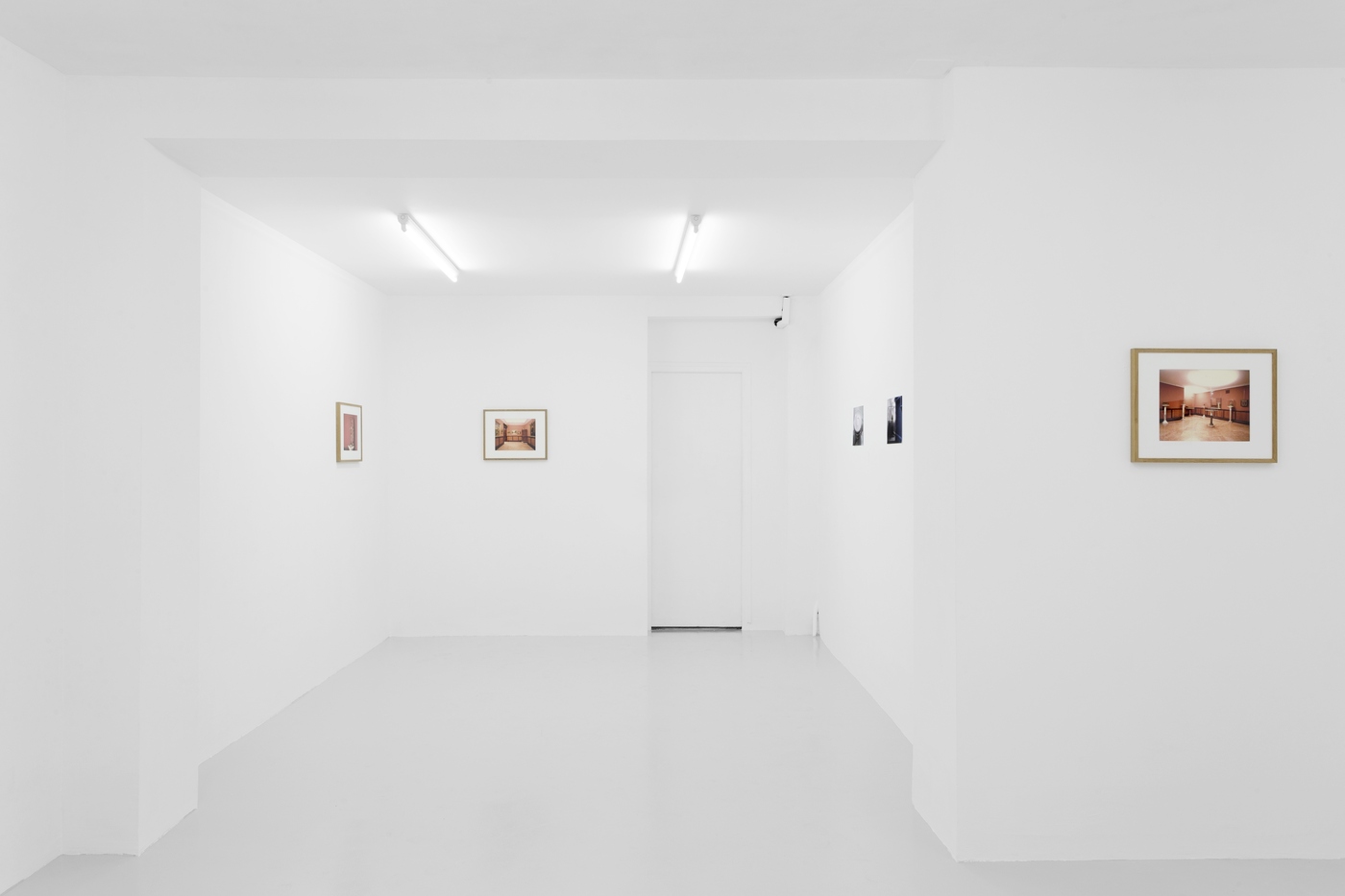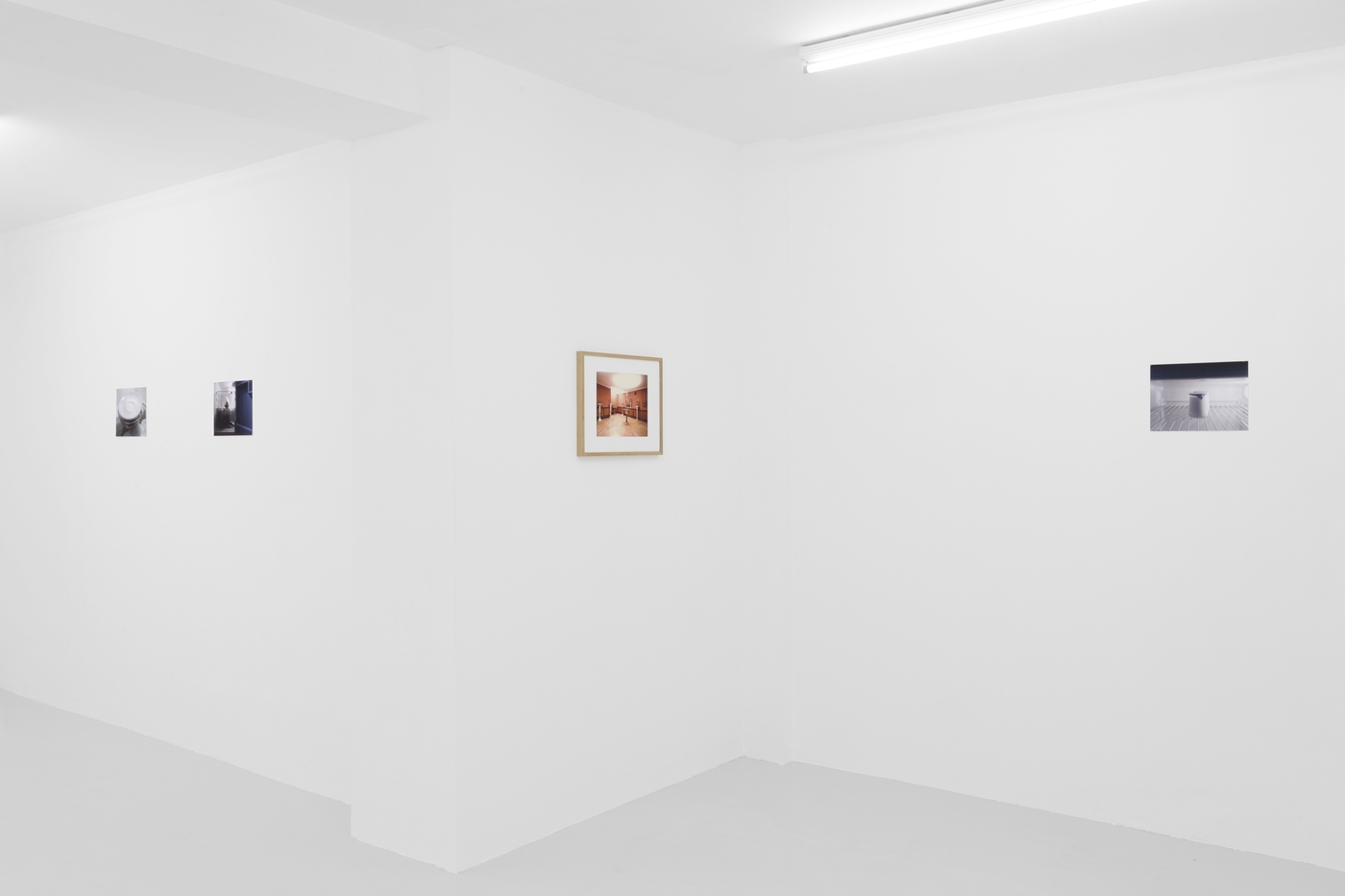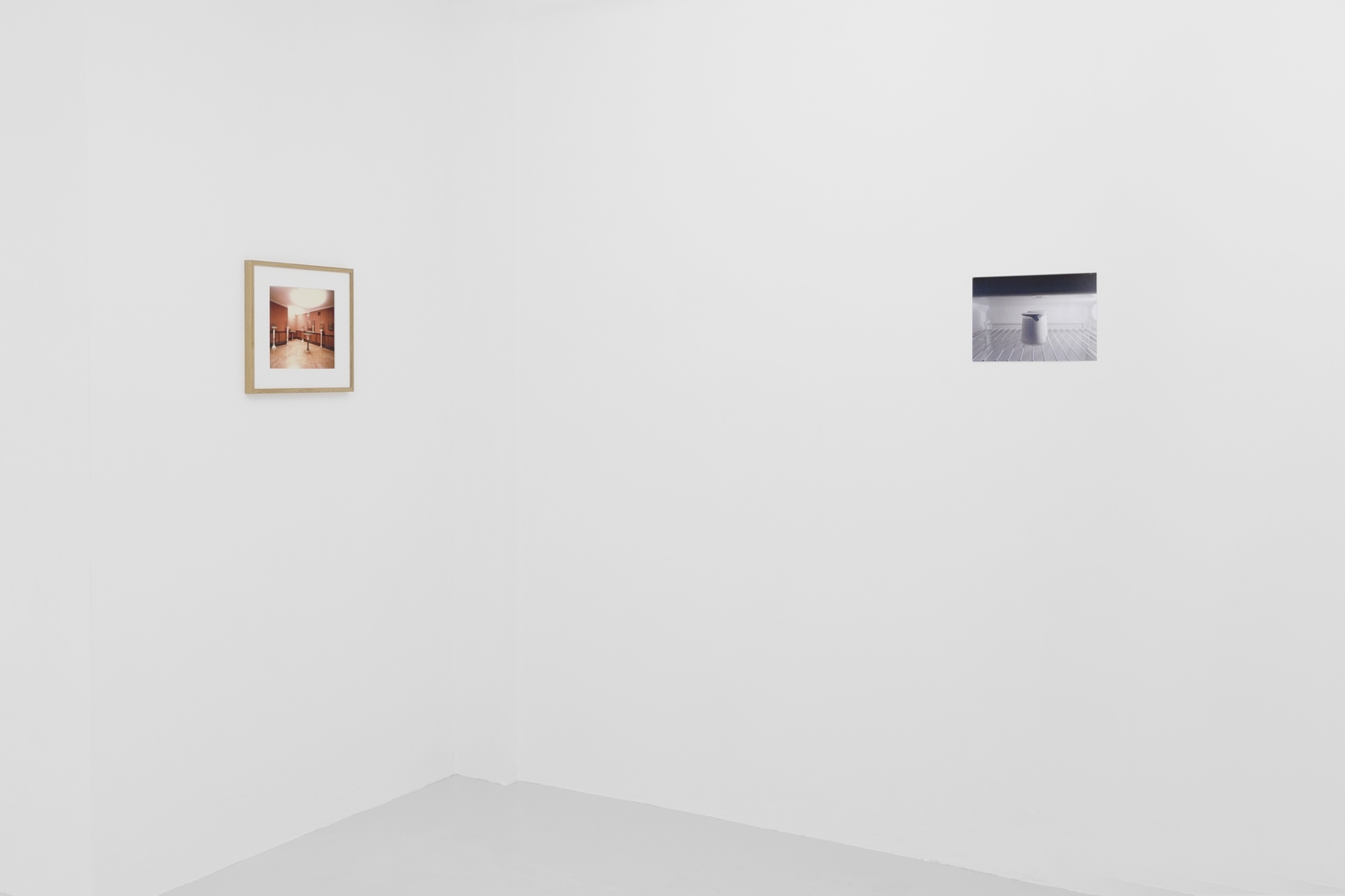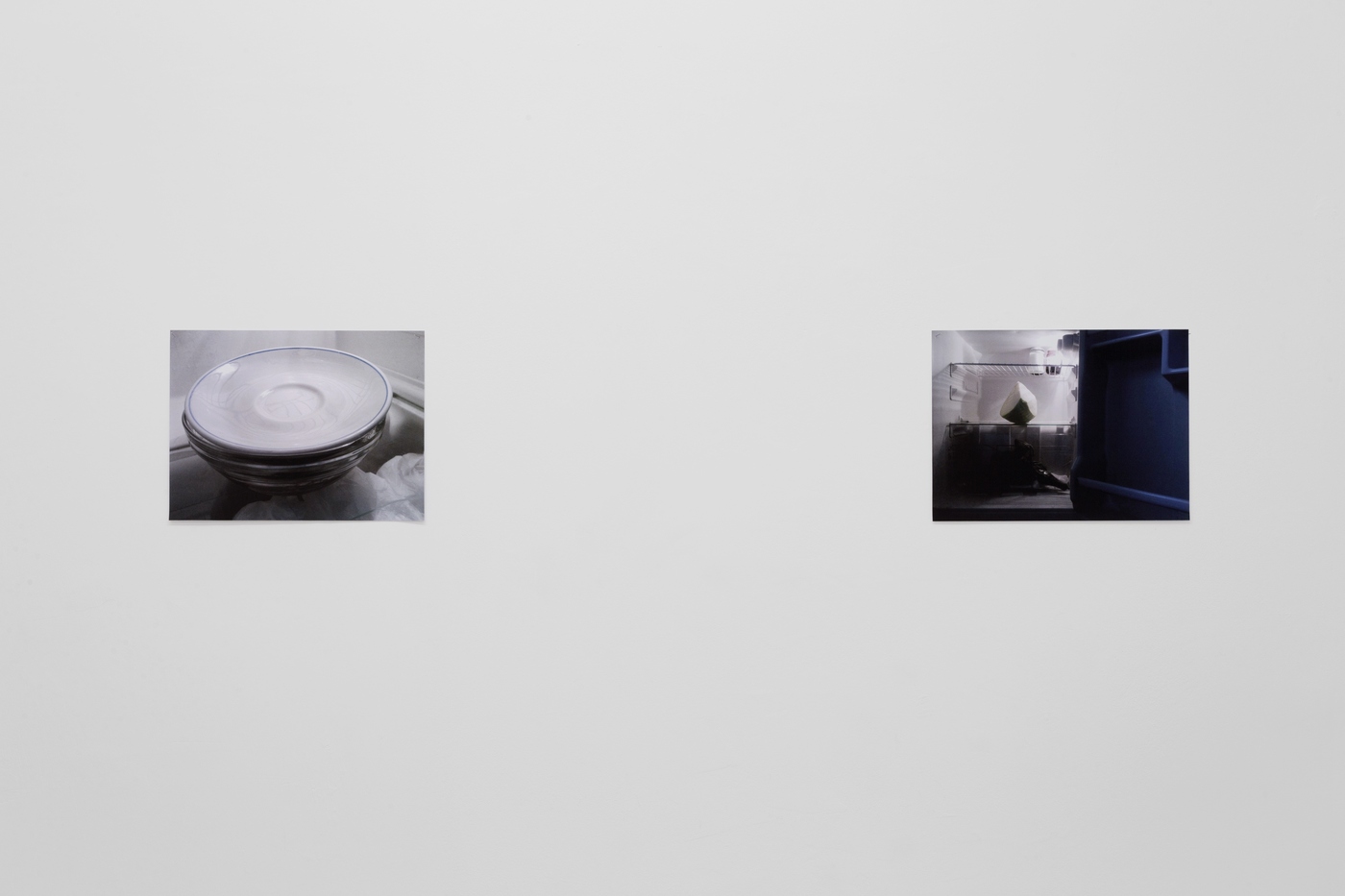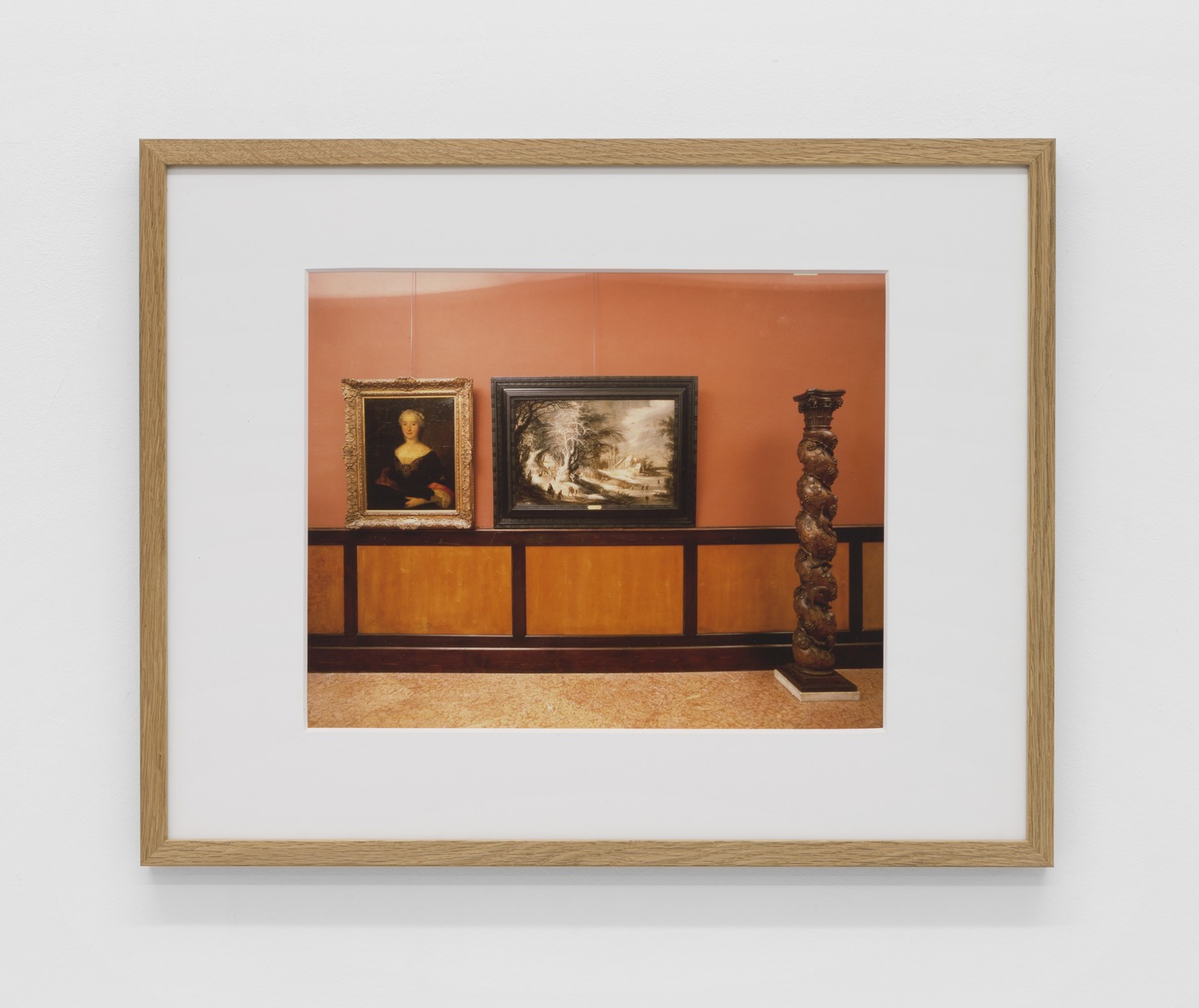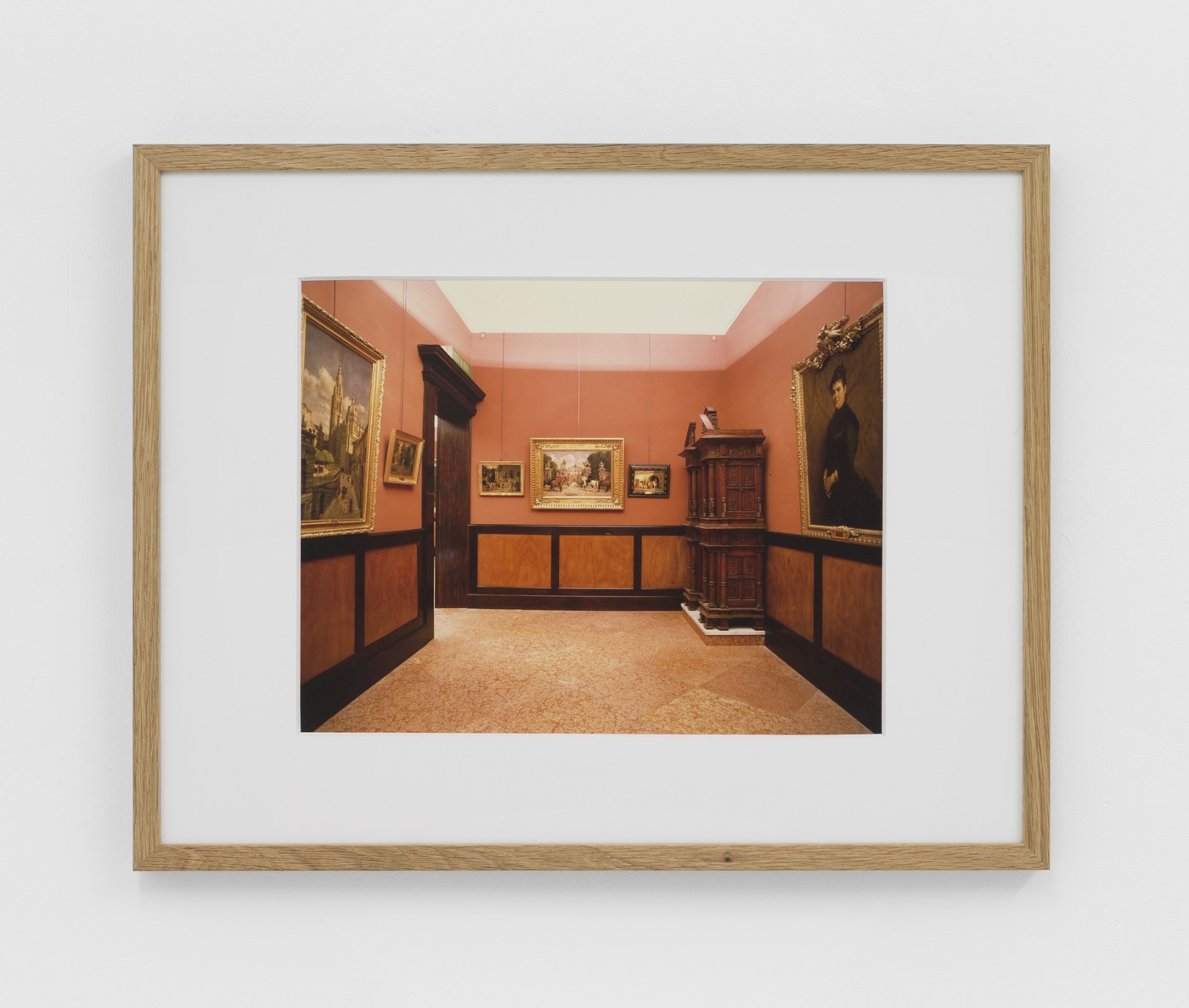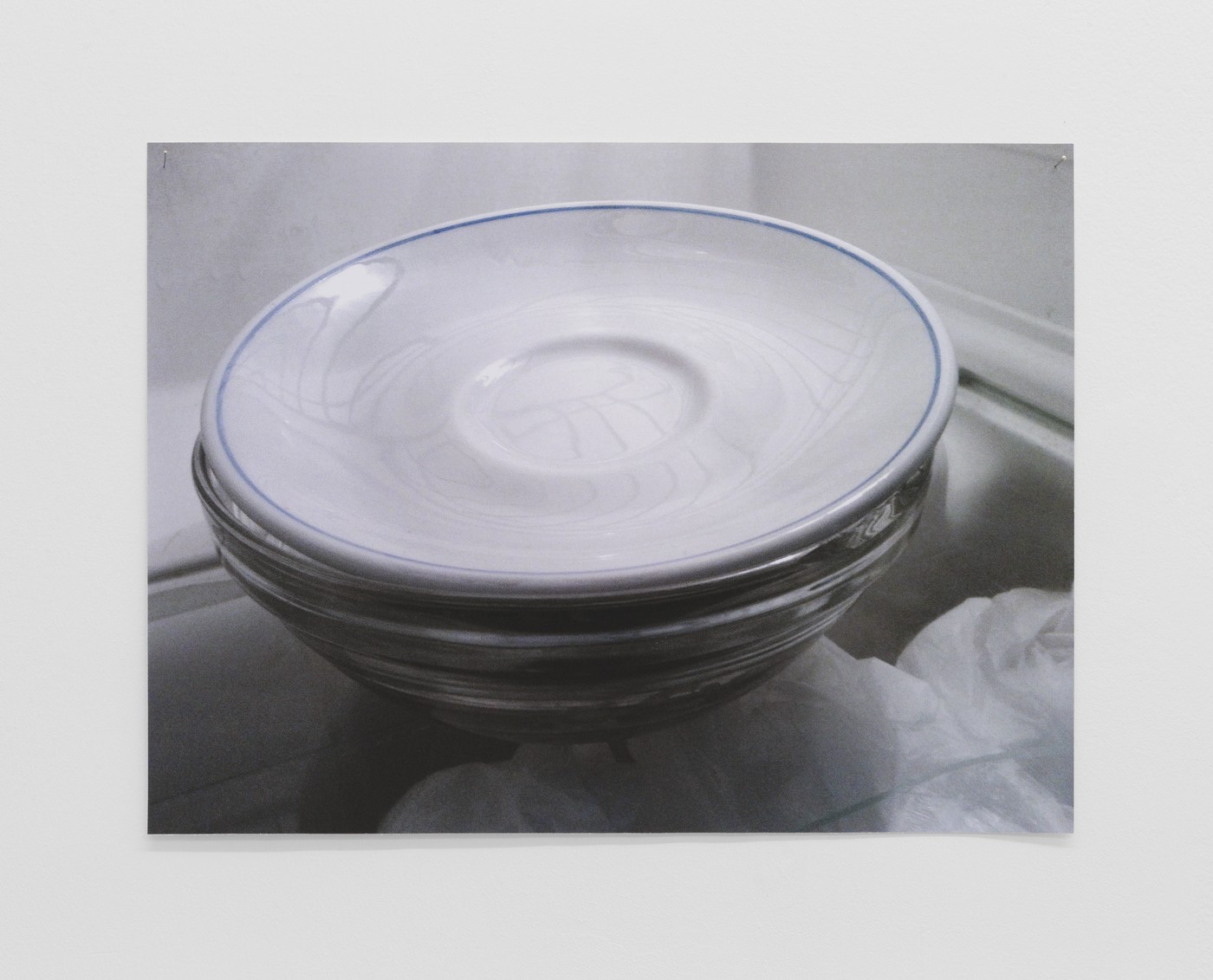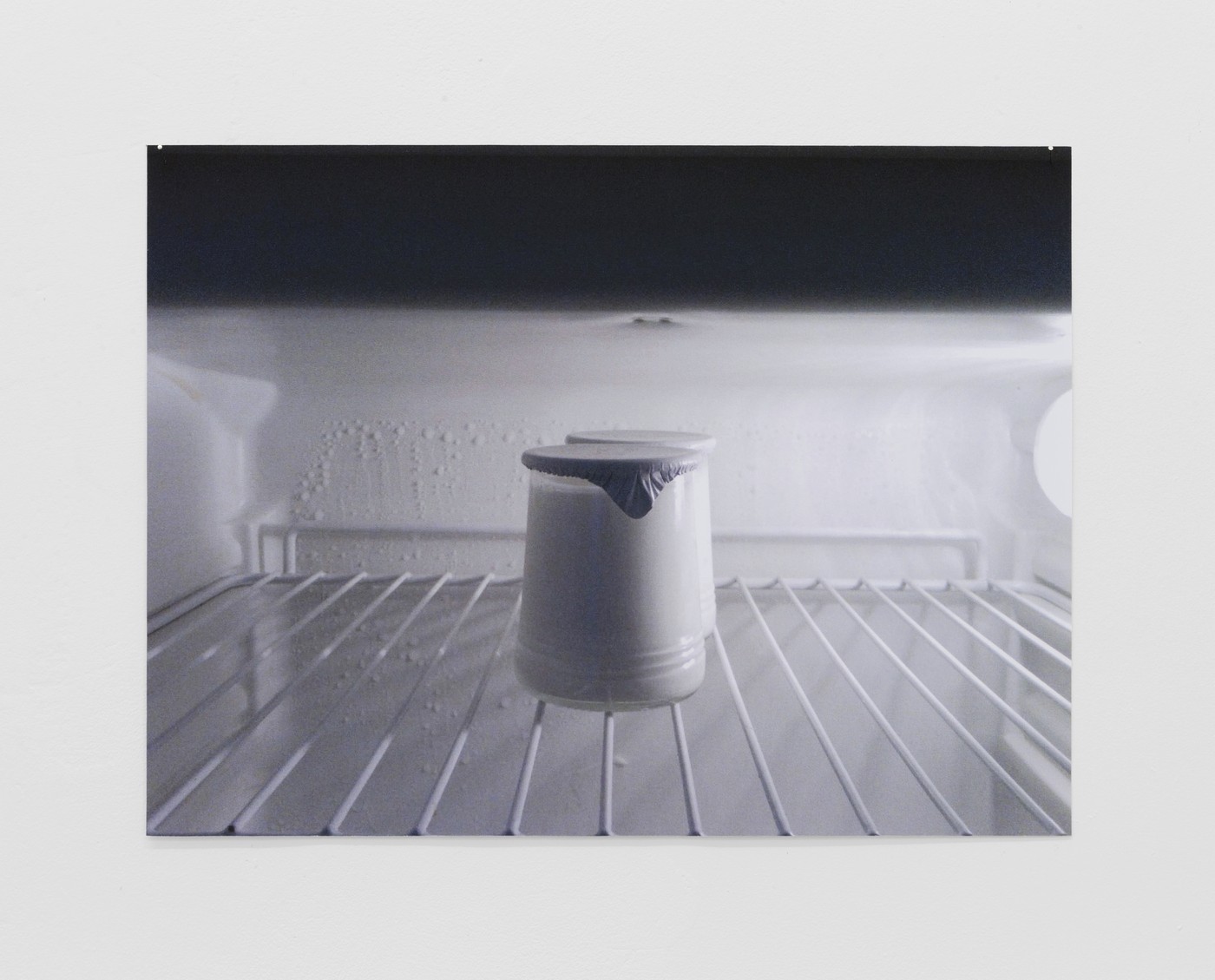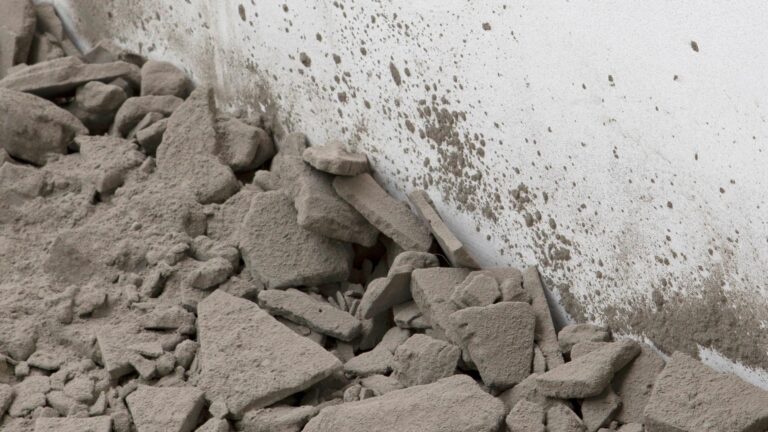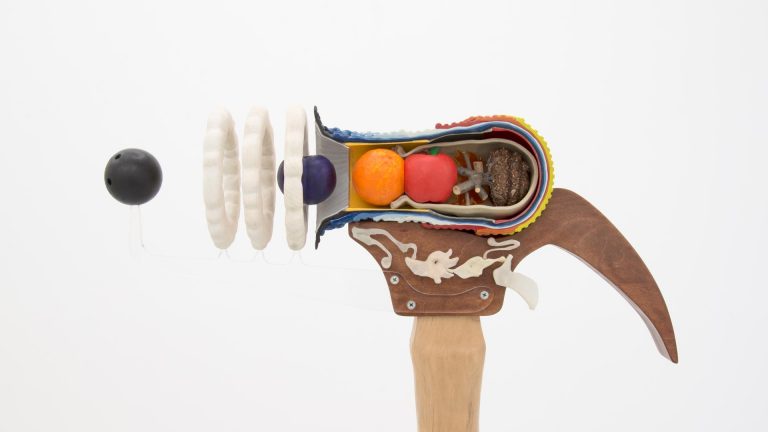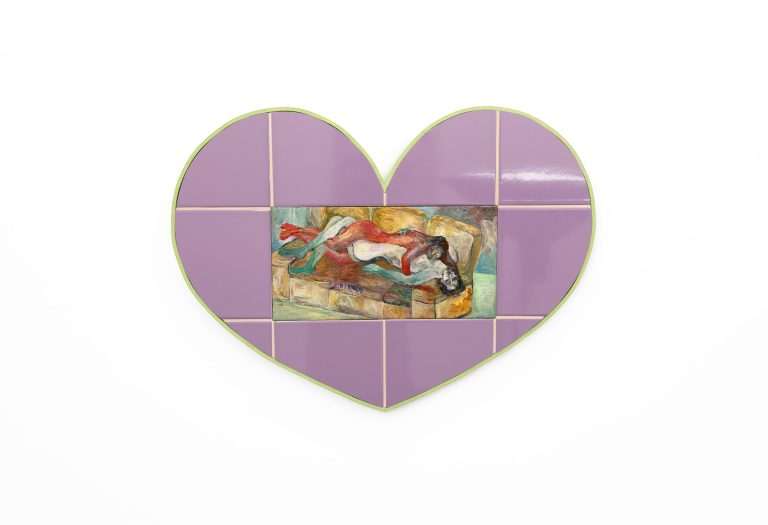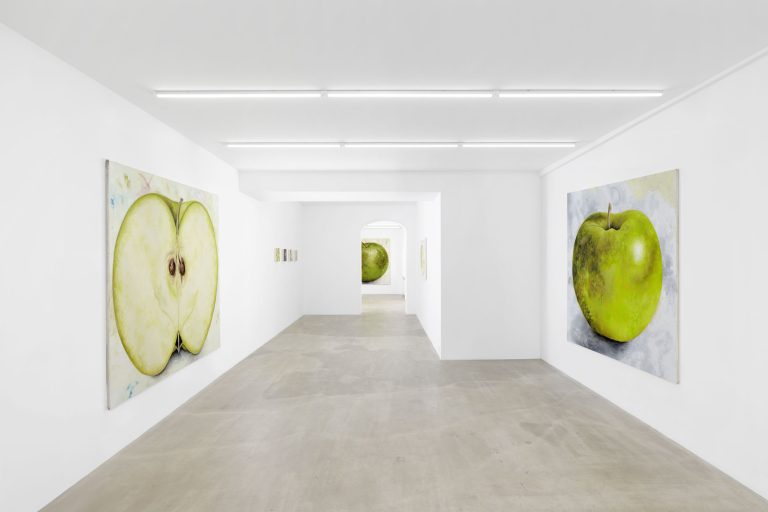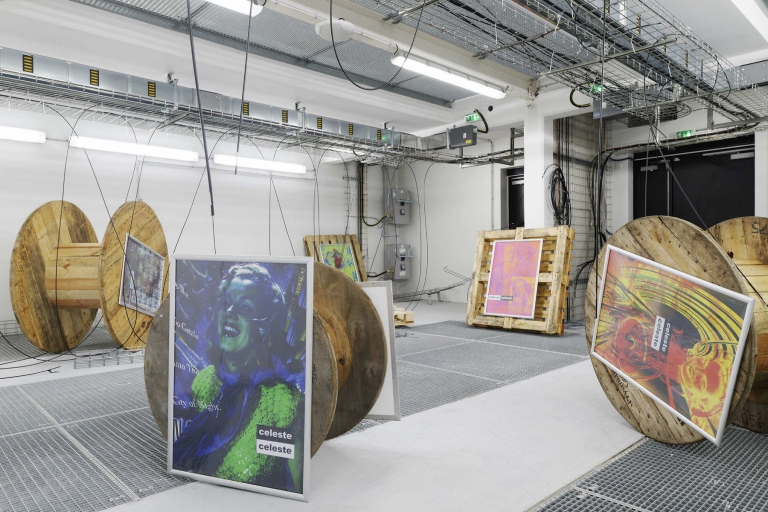Artists: Luigi Ghirri and G. Küng
Exhibition title: Looking in
Venue: Antoine Levi, Paris, France
Date: March 19 – May 7, 2016
Photography: all images copyright and courtesy of the artists and Antoine Levi, Paris
Luigi Ghirri and G. Küng: Looking in. A conversation between G. Küng and Elena Lydia Scipioni
Elena Lydia Scipioni. In this show you are presenting three photographs speci fically conceived to confront the four photographs of Luigi Ghirri upon Antoine Levi and Nerina Ciaccia’s invitation. In his pictures, Ghirri captured this fascinating commingling between home and museum with objects, “boiseries”, display cases and fabrics as they had been originally composed by Luigi Parmeggiani. Spreading light homogeneously, Ghirri made visible the relation between each element and the whole. Which is your starting point?
G. Küng. I let Ghirri take the lead. Antoine and I figured that Ghirri and I relate through a (somewhat passive) documentation of the everyday, an inclination towards abstraction, and because our work can be witty and ironic. I thought it would be most interesting to confront Ghirri’s photos also with photos. This would not be too “reverent” in dealing with the masterful Ghirri, though it is a bit risky. I am not as patient with photographic technique so I decided to amplify this distinction by using a cell phone camera and the simplest hanging.
E.L.S. Why have you decided to flank Ghirri’s museum interiors with the “cold” interiors of a banal modern appliance like a refrigerator with some elements in it?
G. K. Ghirri seemed to let the Galleria Parmeggiani “do the talking” for him, they are more documentary than expressive. This is an interesting way to approach such a curious place. Therefore, I too photographed a single space: my refrigerator. The views also start at a distance and then move in closer, only the significance of the space is much diminished. Similarly, it’s not clear in the photos what my attitude to the refrigerator really is. I tried to mix seriousness and attention with humor and punk. It’s an unartful space photographed artfully. I love the idea of the “container.” The Galleria Parmeggiani, this exhibition, the refrigerator, and a person’s memory are all containers. Each can be opened or not, understood or not, each has it’s own perfect completeness.
E.L.S. The question of the “container” is particularly peculiar in this show’s context: Ghirri himself, in taking these pictures, in a way must have dealt with the building that was hosting the objects/subjects of his pictures. Or at least this is quite interesting to me. The Galleria Parmeggiani was built between 1925 and 1928 for Luigi Parmeggiani – an anarchist who fled from police because he was allegedly involved in the attempt on the lives of two members of parliament from the Socialist Party (1889). He then reached London where he met the Spaniard Escosura with whom later, in Paris, the bond grew stronger around the “Louis Marcy Maison” antiques gallery. This business was linked with the craft production of antique-style objects, veritable author’s fakes designed by Escosura by combining the details of celebrated antique items, manufactured by skilled craftsmen. Luigi Parmeggiani returned to Reggio Emilia in 1924 bringing the collection with him to be housed in a bizarre Gothic- Renaissance style building that he himself commissioned; the entrance as well is a fifteenth century archway inspired by the Morel Palace in Valencia…
Back to the “container” issue. In L’opera aperta (1984), Ghirri wrote that as child he used to have two favourite books: an atlas and a family photo album that both contained the two world categories and they both represented it in the way he imagined. Since the beginning through his photographs, Ghirri attempted to reconcile the dualism between inside and outside, personal story and communication with others, specific places and the history of the world.
G.K. Ghirri also photographed Morandi’s “containers” which were bottles and pots as in the refrigerator…
E.L.S. Taking pictures of Morandi’s painting is like capturing the metaphysics of metaphysics…
G.K. Overall with Ghirri’s work, I find the most interesting thing to be the mood he achieves no matter what the subject. There is a feeling of being outside time. That’s emphasized by the lack of people in the photos, or if there are people, they have their backs to the camera facing the same way as the cameraman, so replicating his stance. The mood is existential, makes me think about mortality. It’s wistful, and sometimes almost bland or dull. Even when he’s making a visual joke, like the photo of the rack of postcards (so photographing photographs), he has a way of belittling our grand human projects and ambitions.
E.L.S. Relations between absence, mortality, and existence all deal with time and its mutual relation to space. It can be interesting to recall the Schrödinger’s cat thought experiment devised by the physicist Erwin Schrödinger in 1935. In a wider context, quantum field theory weakened the concept of objective reality based on common sense in favour of an external observation based on experiments. More than the experiment itself, a connection between inside/outside in relation to existence is particularly relevant. Schrödinger put a cat in a box with a radioactive substance. At the end of the test the cat can be alive or dead. Besides the scientific question, in Paul Davies “Universi Possibili” (1980) it is argued that an external observer can discover the cat’s condition only in the moment when the box is opened. Until that moment, the dead cat and the alive one coexist in a limbo of overlapping layers. When the observer decides to look inside the box, then the two conditions get separated and one of them drops out of reality.
G.K. Yes! This is similar to my thinking about the action of photographing and the temporal fridge-space. Just as the camera captures a moment in moving time and space, when you open the fridge and the light goes on, it’s a similar kind of portal in a metaphysical sense. The fridge is most of the time cold-preserved, always in darkness, like the subconscious. One could even say that the fridge doesn’t exist until its opened, like the tree doesn’t make a sound when it falls in the forest and no one is there to hear it, and like the world only really “exists” when it’s photographed. Only in the moment of photographing is one conscious. I like Francois Laruelle’s theory of non- photography where photographs are like windows onto a parallel universe [1]. So it would be interesting to stop looking for overt subjects in the real world, and rather photograph in-between and accidental perspectives, where a different kind of reality emerges. I don’t push it very far in this project, but it is where my interests are headed…
E.L.S. Though the questions may have advanced from the ‘80s, the issue of time is still at the core of our concerns and it gets even more complex if we consider the web as a sort of “alter-parallel-condition” to be added to the dead and alive ones. A basic example is that our Facebook account profile with all the images inside will outlive us.
G.K. We need to take into account the prevalence of images today (the internet as a grand cache of images). This phenomenon suggests an endpoint when it comes to photography—where does the documentary impulse lead when everything is documented and surveilled? What constitutes an interesting subject then?
E.L.S. In 1969, Ghirri wrote that the image of the world from the moon that appeared in the newspapers was not only the image of the world, but one that included all the world’s images. Pictures, books, frescos, scripts, “… finally the image of the atom and the one of the world facing each other”. We can say, it is an image that includes the Galleria Parmeggiani’s rooms (with all the real and fake objects) and all the world’s fridges. We cannot see inside when they are closed and the light is off, but they are included in our mind, because now we do know the image of the whole earth. Our presence is the attestation of their existence as well as the thud of your tree in the forest.
[1] Myriads of negatives tell of the world, speaking among themselves, constituting a vast conversation, filling a photosphere that is located nowhere. But one single photo is enough to express the real that all photographers aspire one day to capture, without ever quite succeeding in doing so. Nevertheless, this real cohabits intimately with negatives, with clichés as embedded in our lives as they are imperceptible. Photographs are the thousand flat facets of an ungraspable identity that only shines – and sometimes very faintly – through something else. What more is there to a photo than a curious and prurient glance? And yet it is also a fascinating secret.
Luigi Ghirri, Reggio Emilia, 1986 (From the series “Galleria Parmeggiani”, 1986)
Luigi Ghirri, Reggio Emilia, 1986 (From the series “Galleria Parmeggiani”, 1986)
Luigi Ghirri, Reggio Emilia, 1986 (From the series “Galleria Parmeggiani”, 1986)
Luigi Ghirri, Reggio Emilia, 1986 (From the series “Galleria Parmeggiani”, 1986)
G. Küng, Refrigerator 3, 2016
G. Küng, Refrigerator 1, 2016
G. Küng, Refrigerator 2, 2016



